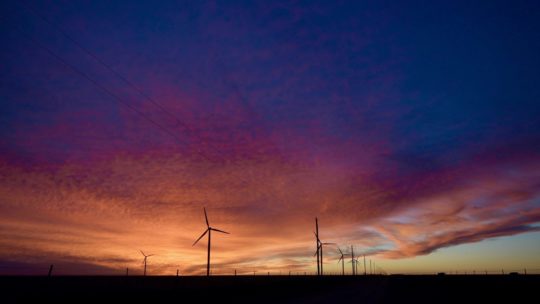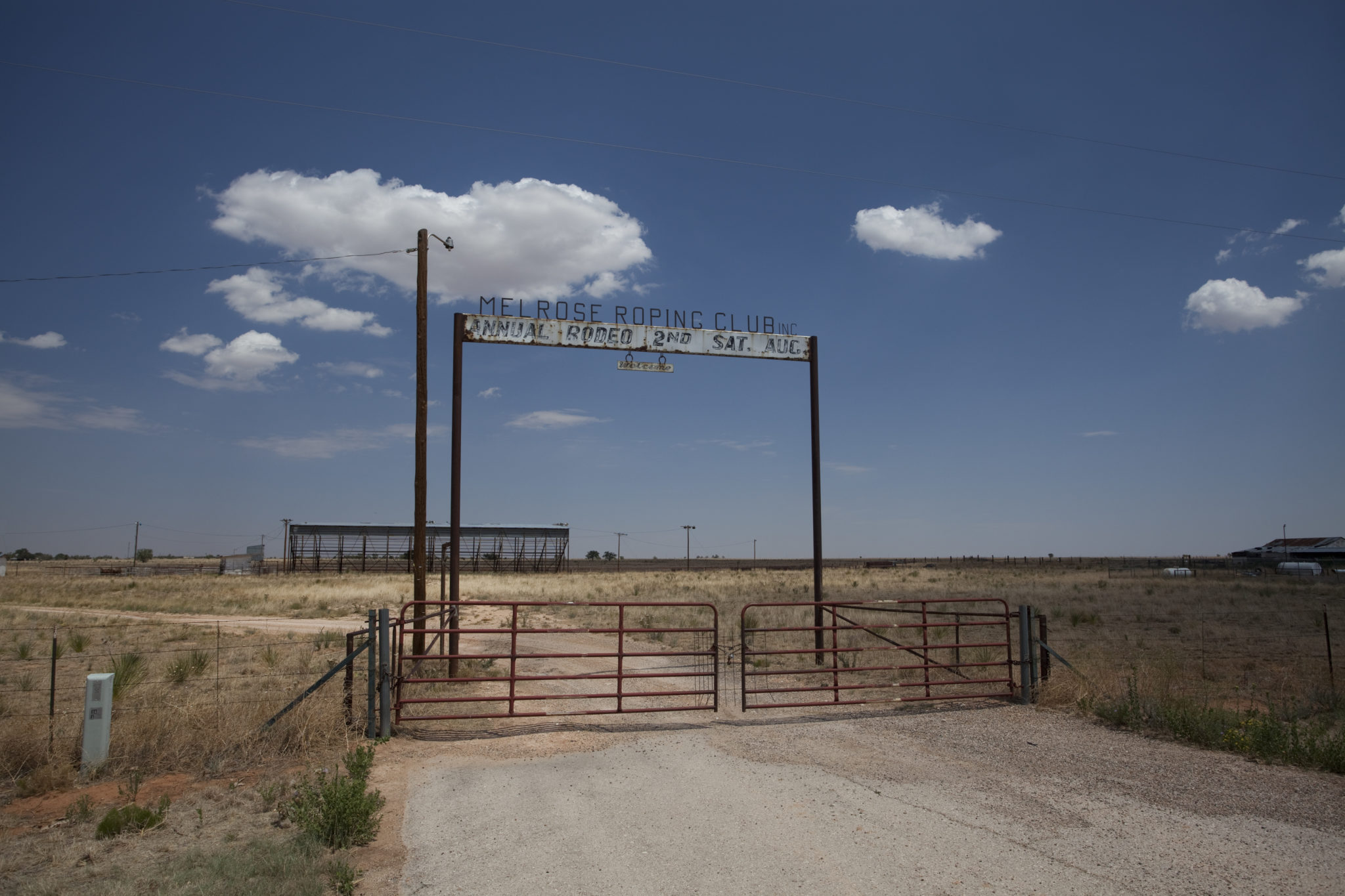Winds of Change Revive the Land of Enchantment
One Woman’s Fifteen-Year Quest to Stop the Cycle of Rural Decline
In the Dust Bowl days of the 1930s, six-year-old Marian Ruth Martin would trek the distance to and from her first grade classroom in Curry County, New Mexico, oftentimes struggling to even stand up against the wind. As strong gusts whipped across the flat ranchlands of her hometown, she wondered why God would ever make such a force.
More than seven decades later, Martin, a lifelong teacher and pianist, pinpointed a way for her community to capitalize on the brutal winds that had plagued her walks to and from school. And for the past fifteen years, she’s been working to realize that vision—of her community’s very own wind farm.
“We were either blessed or cursed with some of the worst wind or best wind you could ever hope to see,” says Martin. “Now we’re working to use it for something constructive—something that can help strengthen our community.”
A Struggling Land of Enchantment
In 1941, New Mexico was coined the Land of Enchantment.
Despite the state’s majestic scenery, vibrant culture, and rich history, the plains can be a difficult place to earn a living. Like many of the state’s localities, Curry County and its neighbor Quay have not been sheltered from the many hardships that farmers and ranchers have faced in recent years.
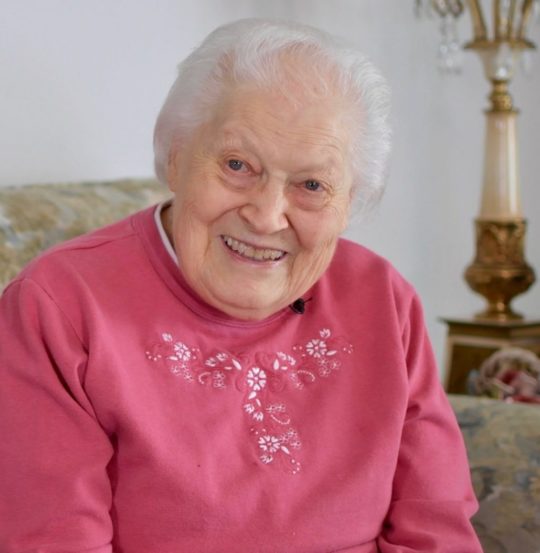
“My grandad sold wheat back in 1930, ’31 for basically the same price as we’re getting for wheat now,” says Wesley Grau, a cattleman and seed stock producer in Curry County. “Everybody is struggling financially, and in our area, the economics of agriculture are you either get bigger or you get out. So many people have left.”
As evidenced in small rural towns with shrinking populations, there’s never quite enough tax revenue to make ends meet at the local level. Schools, roads, and infrastructure suffer—and so goes the vicious cycle of a dwindling rural community.
As droughts and other difficulties have forced families to relocate, the area’s population has declined rapidly. Since Martin, Grau, and the rest of their generation were young, the county’s thirteen schools have dwindled down to four.
“When I started school, there was a home on nearly every corner and now there’s probably an occupied house on every 20 or 30 sections. The Village of Grady, when you count the cats and dogs, has a population of about 100,” says Jerry Powell, who also farms in Curry County.
“That’s why the development of the wind farm is so important,” says Powell. “It brings a source of revenue that will allow landowners to hire more help and bring people back into the area.”
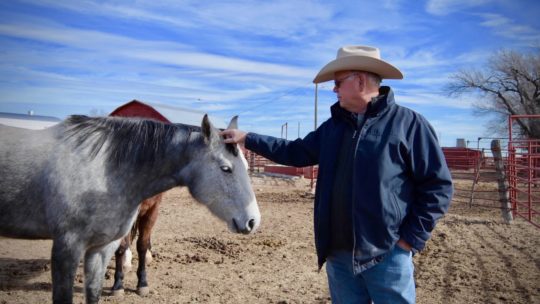
A Community-Driven Project
Well over a decade ago, when work on the Grady Martin Wind project commenced, the development efforts were inspired by the grassroots movement that first brought electricity to the region.
“Back in ’46, ’47, a few farmers got together, just like us, and decided they wanted to bring electricity to our area. And they did it,” says Powell. “That’s the way we look at the development of this wind farm: it had to start somewhere—with an idea and the people dedicated enough to put time and effort into developing it.”
In 2006, Martin organized a group of landowners, including Grau and Powell, to capitalize on the rich renewable resource at their fingertips.
“Every farmer I know would love to host wind turbines on their property and take advantage of this wind, and that’s what we discovered when we started working on the project,” says Martin. “Eighty-two interested landowners showed up to that first meeting.”
“Since we had the best wind in the United States, I wanted to get the best developer.”
Heartened by the community’s enthusiasm, Martin led the rest of the Frio Group—the name the founding group of landowners gave itself—as it got down to work. As is standard for wind energy development companies to do, the group of landowners installed meteorological towers and began organizing community members interested in signing up for the project. At a certain point, Martin realized their venture was ready for the next stage.
“I ran off nine single-spaced pages of wind developers from the computer and started vetting them every way that I could,” says Martin. “After, gadzooks, don’t tell me how many hours I spent on that—I thought Apex was the best one, and since we had the best wind in the United States, I wanted to get the best developer.”
Martin emailed Apex with details of the wind resource and local terrain, and within two weeks, an Apex representative had visited the site, met with the Frio Group, and committed to leasing land from community members.
“In virtually all the other projects that we do, we enter the area without community members having much, if any, prior knowledge about wind farms,” says Jessie Audette, senior director of project development at Apex Clean Energy. “To encounter a community that has already organized itself, already decided that it’s a good idea, already familiarized itself with the technology, and already decided what it wants was a really refreshing experience for us.”
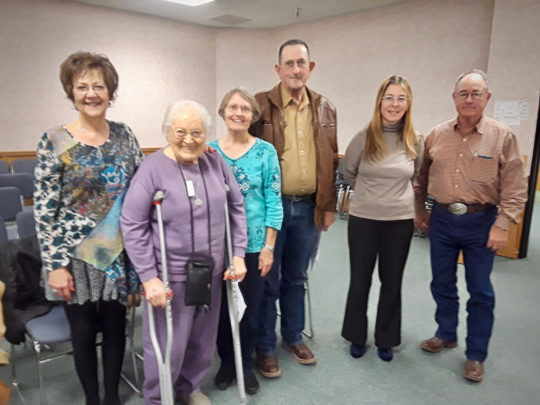
A Novel Approach That Truly “Shares the Wealth”
In a region that’s long been recognized for its contributions to the energy economy—albeit for oil and gas—wind power has found its place. Driving into Curry County from the west, visitors see gleaming white turbines spinning gracefully, propelling clean, renewable power into the electric grid.
“Wind energy is becoming the norm. If you’re driving through the countryside in this region, you’re going to see pockets of wind energy,” says Mayor David Lansford, who is in his 20th year governing Clovis, Curry’s county seat. “We have so much wind and so much sun in this part of the country—it’s an optimal location for renewable energy.”
And it’s not just New Mexico—wind energy across the United States has more than tripled over the past decade, and today it’s the largest source of renewable generating capacity in the country.
Grady Martin Wind, which derives its name from the town of Grady and from Marian Ruth Martin—teacher, pianist, and wind developer—will further enrich the land of enchantment.
With other wind farms dotting the landscape, Martin and the Frio Group had plenty of references as they explored the best renewable options for their community. After years of research, one of the group’s utmost priorities was that the entire community experience the benefits of wind energy together.
“We didn’t just want it selfishly for our land,” says Martin. “One of things that our committee was very dedicated to was that every landowner—turbine or not— would benefit.”
As with every wind project, community members across the board profit from direct and indirect economic injections flowing to the townships and county. It’s less common, if not downright rare, that landowner payments are spread evenly among residents—but the Frio Group’s priority aligned with Apex’s.
“We already had in mind a much more community-oriented wind lease, which benefits everyone within the project boundary, whether they have turbines on their land or not,” says Audette. “That was of great appeal to this group that I think had, from the beginning, viewed its purpose as improving the lives of all members of the community.”
“Some of these other companies just financially reward landowners that have the turbines,” says landowner and Frio Group member Lane Grau. “With Apex, everybody who has a lease stands to benefit, and that has helped the community come together to support the project.”
When all is said and done, Grady Martin Wind will contribute millions of dollars in direct and indirect economic benefits to Curry and Quay Counties. The project, which derives its name from the town of Grady and from Marian Ruth Martin— teacher, pianist, and wind developer—will further enrich the Land of Enchantment.
“I’m thrilled to think about the children and grandchildren that will benefit from the project from now on,” says Martin. “This is the greatest thing for our community.”
Now, more than eight decades after she struggled as a young girl against the severe winds of Curry County, Martin embraces them. She’s spent much of her life working to energize her community—through her lessons, her music, and for the past fifteen years, through the wind. Today, with Grady Martin Wind, that dream is closer and more tangible than ever before.
